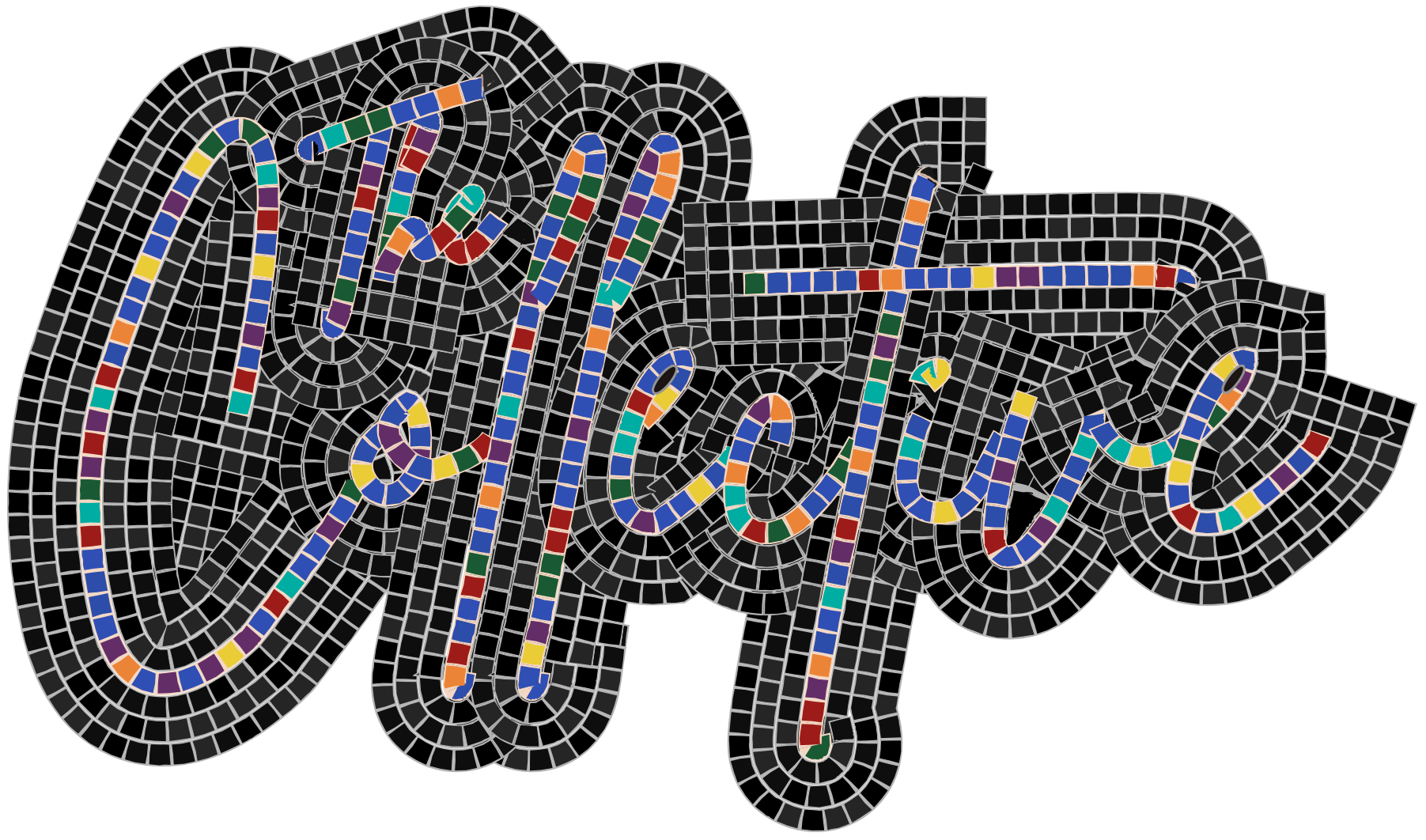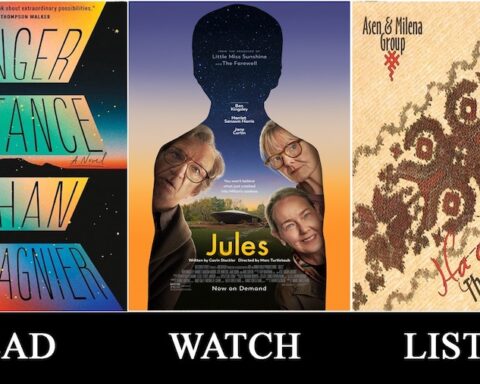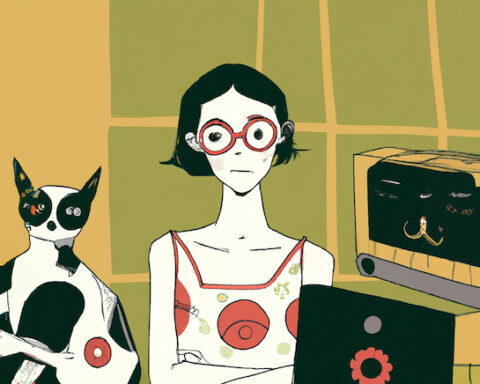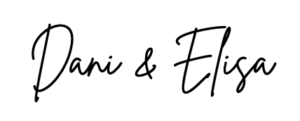Introduction
In part 1 of this three-part series, I opened a conversation about decoding contemporary American politics through storytelling techniques employed in Hollywood. In this second installment, I will focus more on institutional rather than federal or presidential politics. It is my firm belief that the institutional gatekeepers that provide access to power have as much impact on our lives as any specific leader. Given the readership of The Collective, I will use primarily music education as an example, though I believe the ideas I present can be applied to institutions in any field.
Taking the narrative trope of performative risk as my launching point, I will make the argument that even well-meaning organizations are falling well short of achieving true equity, instead succumbing to the emotionally pleasant but logically harmful idea that minority representation is a cure-all. No, representation is not enough; rather it is only the first step in a very long process that must culminate more thoroughly with a linguistic hegemonic systems breakdown.
But first, let’s define performative risk.
Performative risk at the movies
Performative risk is when writers create events that seem on the surface as if they would logically result in a new narrative trajectory, but then revert back to the original plot, causing the event to become little more than a tangential, meaningless spectacle without consequence in any true story sense. Performative risk, as a trope, has long been defined as bad writing.
I am hardly one to defend Indiana Jones and the Temple of Doom (1984) as any kind of progressive marker of inclusivity; the number of times I was asked as a child if Indians actually ate chilled monkey brains was enough to disabuse any idea that simple onscreen Indian representation — two venerated South Asian actors (Amrish Puri and Roshan Seth) and allusion to Hindu Gods (Kali and Shiva) — made the movie inclusive. But there is one crucial aspect of the Steven Spielberg picture that, as a writer and director myself, I have always respected.

When Indiana Jones (Harrison Ford), Willie Scott (Kate Capshaw), and Short Round (Ke Huy Quan) are abandoned somewhere over India on a soon-to-crash plane, they have no choice but to use an inflatable raft as a parachute, leap out of the plane, and “boat” down a steep mountain. These are characters who have no intention of being in India; but India, rather than being just a narrative tangent on their way home from China, becomes the backdrop for the entire movie. Yes, even as a child, I knew that using an inflatable raft as a parachute was implausible and ridiculous, but I accepted the spectacle because it had consequences. It sent the narrative off in a new direction, one that would not have been possible had that spectacle not occurred.
Audiences accept implausibility when the unlikely spectacle leads logically to the next step in the plot.


Cut to 2008: Indiana Jones and the Kingdom of the Crystal Skull. This deservedly much-maligned film had the same director, the same star, and, supposedly, the same energy. So why did it seem more ridiculous? Why did audiences and critics laugh at the implausibility of Indiana Jones surviving a direct nuclear blast by hiding in a refrigerator? Why did it rankle so many fans that Jones and his companions go over three “frightening” waterfalls in a car? Because there are absolutely zero consequences to any of this performative risk. In fact, in the latter case, after a few gasps and moans, Indiana Jones and his companions end up exactly where they were headed all along. Implausibility without consequence reeks of immediate artifice, and is therefore a major obstacle to achieving audience suspension of disbelief.
HBO’s Game of Thrones (2011-2019) offers positive and inverse examples in one TV series. (Major spoiler alert, skip this paragraph if you care.) The early seasons took great risks in crafting spectacles that sent the series careening off in unexpected directions. Both Ned Stark’s execution and the Red Wedding completely changed future events. They were spectacles not merely because of major character deaths but because they had consequences. Contrast this with season eight, in which Varys’ death is fully inconsequential and therefore meaningless. Similarly, Arya’s multi-season arc of becoming a Faceless Man results in very little, retrospectively making all the events of previous seasons nothing but empty screen time. Game of Thrones went from a show structured through logical consequence to one where characters would survive impossible battles with the undead by means of the showrunners D.B. Weiss and David Benioff simply cutting away. Why? In the interest of getting to the ending as quickly as possible, Weiss and Benioff began thinking of later season events purely as necessary spectacle moments rather than logical plot connectors. The performative risk in Game of Thrones’ final season received so much scorn from its audience that it even sparked this famous petition demanding HBO “competently” remake the final season.
Institutional efforts to normalize performative risk
For hundreds if not thousands of years, performative risk in narrative has, for the most part, gone down with audiences like a lead balloon (Annie Wilkes’ famous he didn’t get out of the cockadoodie car thesis from Stephen King’s Misery comes to mind here), and yet Hollywood’s studio system seems determined to incorporate the technique into modern blockbuster narrative. Why? As always, the answer is money.
If audiences accept and even champion performative risk, then studios no longer have to worry about selling narrative craft; they can instead focus on investing in set pieces, a much more formulaic metric of ultimate financial return. If a studio can turn box office success into a paint-by-number playbook, the creative act of moviemaking becomes an act of only financial conversion, not of idea transfer. Performative risk provides a more reliable machine, with an input investment and a proportional output return. Just as with the technique of unresolved endings discussed in part one of this series, there is clear financial incentive to training audiences to accept performative risk as good writing — turning a movie into an emotional thrill-based theme park ride rather than a cogent intellectual experience (and no, this does not apply solely to superhero movies, despite Scorsese’s famous denunciation). To this day, cinema is still one of the riskiest investments; anything that can be done to mitigate actual risk in favor of performative risk is highly sought after.
What does it matter that Superman “died” in Batman v. Superman: Dawn of Justice (2016) when that same movie ends with the dirt flying up off his coffin suggesting his impending resurrection? Or if John Wick (2014-2019) can be punched, stabbed, shot, and run over by cars, but only limps when running between action scenes, and seems perfectly unhurt during the fights themselves? In all of cinema, prior to the modern age, the only performative risk audiences have regularly accepted to any degree is the horror movie jump scare — a convergence of editing, music, blocking, and performance — that ultimately gives way to nothing at all, accepted largely only because all parties involved understand on some level it’s just a little joke. It’s not part of the story, the filmmakers seem to tell us when the music dies down. I just wanted to make you jump. Gotcha.
So how did studios eventually succeed in making performative risk accepted and even championed by mass audiences?
The answer lies with representation.
Consider the much-celebrated shot in Avengers: Endgame when all the tough female characters come together in slow motion in the middle of the climactic battle. Never mind the implausibility of them all finding their way to that one spot on such a large battlefield. Never mind that this shot is purely performative and completely without consequence and/or real risk; it is meant to be reacted to only emotionally, without real logic within the realm of the film.

And therein lies the greatest danger to performative risk: audiences are meant to value the moment not for its narrative coherence, but for how it makes them feel, despite the lack of contextual logic. To be clear, I am not saying that the all-female shot in Endgame shouldn’t happen, just that the writers should provide a better reason why those particular characters are in that frame posturing in that moment and/or follow up with a real narrative pay-off. After all, the performativity must logically follow what came before, and logically precede what will come after.
But audiences cheered. After all, the ones who didn’t were branded anti-feminists, just like many of those who hated the all-female remake of Ghostbusters (2016), a feature-length performative risk spectacle that sparked fervor over its feminist bona fides. We are never meant to question whether Ocean’s 8 (2018) challenges the patriarchy or merely allows for a feel-good diversion from systemic stasis. In these films, the performative risk is disguised with feel-good progressive propaganda, and suddenly, such trivial things as narrative logic are no longer important.
Representation as performative risk
For the record: of course representation is important. No, my argument should not be construed to mean that existing power hierarchies should be allowed to continue; of course everyone deserves a seat at the table. My thesis is that for any action to be considered true representation, it has to logically follow what came before, and logically precede what comes after. Just because something is “representative” does not make it plausible or even meaningful. In fact, without consequences, performative risk is always implausible. And, as a minority myself, when it comes to racial issues in America, I very much want to quote Annie Wilkes, “This isn’t what happened last week. Have you all got amnesia? They just cheated us! It’s not fair. [We] didn’t get out of the cockadoodie car!”

One of the reasons representation spectacle is mostly performative is that Hollywood, and institutions in general, really do not have a problem presenting basic representation. The misconception that representation has to be dragged out of the system is actually due more to institutional inertia than truth. Crazy Rich Asians (2018) was not a true risk for Warner Brothers, the distributor of the film; the executives were confident that audiences (at least globally) would provide a healthy return on investment for the $30 million price tag. If anything, the executives underestimated how little of a risk they were taking. To this day, the highest-profit Marvel movie is not Avengers: Endgame, the ultimate resolution to Iron Man and Captain America’s storylines, but Black Panther (2018). With very few exceptions, when studios have played the representation card, starting with Slumdog Millionaire (2008), they have hugely won in terms of box office and audience response. Shang Chi, Encanto, Moana, Raya and the Last Dragon, Wonder Woman, Squid Game, The Happiest Season… the list goes on.
Could anyone possibly believe Hollywood hasn’t noticed that representation is the cheapest key to financial windfall? It even makes for great PR (which sometimes seems as if it might as well be an acronym for performative risk rather than public relations). And yet, each “inclusion” is celebrated as “daring.” Why? Because the studio system has co-opted and commercialized the struggles of minority movements for profit, pretending to stand as good-faith diversity leaders when all they’re doing is business. And it’s working. It’s much cheaper to hire Henry Golding than it is to hire Tom Cruise or Tom Holland (who have not only significant paychecks but also other “spectacle” costs, such as stunts and safety insurance in the case of the former, or the salaries of other iconic white male actors to stand alongside in the case of the latter). On the other hand, minority actors just have to be there for it to be considered a spectacle, like all the women standing together in one non-functional battle shot in the middle of Endgame. Low-cost spectacle is not a business risk, but a business goal.
For Hollywood studios, representation is only a performative risk, little more than political spectacle en route to a significant box office return. These institutions perform terror as they go over CGI waterfalls and end up exactly where they wanted to be all along: the bank.

Again, I am not saying that representation is wrong. I am simply stating that representation is too low a bar — the Hollywood equivalent of “I can’t be racist; I have a black friend.” It is performative risk, accepted and normalized and even celebrated in the eyes of the populace. No, what we need is representation plus narratively coherent minority thought. Squid Game is daring not just because it’s Korean, but because it takes a stand against the moral failings of a society that provides no accountability for the murderous tendencies of the rich while penalizing the poor for more minor moral failings. Every episode in that series has consequences both within the plot mechanics and for the characters’ psychologies. It’s compelling and well-written and contains no performative risk, as grisly and gory as it may be. This Korean-language series even has an Indian character and manages never to tokenize him or to pat itself on the back for his inclusion; he is simply a three-dimensional character, organic to the larger pastiche.
But this article is not meant to be just about movies and TV. Hollywood is merely one of the most obvious examples of these massive political problems. Now I want to focus on the politics of other institutions that co-opt these tropes and techniques to further their own systemic agendas.
Political theater
In mainstream American presidential politics, journalists are usually very quick to recognize performative risk, especially when enacted by their news organization’s rival party (what an Orwellian clause I’m embarrassed to type). On that stage it’s known as “political theater,” the necessary centerpiece of politainment.

Remember George W. Bush in a flight suit? That was costume design. Or that same man in front of a Mission Accomplished banner? Production design. Barack Obama drinking a glass of Flint water? Props. Nancy Pelosi ripping up Trump’s State of the Union after his speech? Blocking for camera. Lauren Boebert’s Christmas photo? Marketing. Donald J. Trump not wearing a mask during the Covid pandemic, despite knowing that he had access to the newest little-available treatments? Simple storytelling.
Yet all of these are performative risk. Not a single one of these actions was logically meaningful; they were all designed to engineer an emotional response within the viewer, without the subject actually risking having to modify a single aspect of their own behavior.
Each party touts their most party-line minorities as icons, because while the institution does not mind looking different, it doesn’t actually want to do different. They want minority faces, but not non-majority points of view. Representation of skin tone is all well and good, but we need representation of thoughts and ideas and histories and cultures. We need logic, not emotion.

We have plenty of non-performative examples throughout history: Tommie Smith and John Carlos raising their fists at the Olympics; Colin Kaepernick taking a knee in front of the eyes of all of the NFL and America; Anita Hill choosing to speak against Clarence Thomas; Pat Tillman’s family speaking out about what happened to him in Afghanistan; Hannibal Buress calling out Bill Cosby during a comedy event, sparking a re-evaluation of that beloved TV dad; Lucille Ball insisting on an interracial marriage being featured on TV; Eugene Goodman directing a mob of treasonous “tourists” through the Capitol; Ruby Bridges walking into school; the Ukrainian resistance marching on armed Russian troops; Malala Yousafzai desiring an education; a soldier entering a war zone; George Floyd existing. We know these risks when we see them because they are our controversies, not our commercials. There is a risk of push-back even from supporters, who might say, “Let’s just go along to get ahead; let’s not ask for so much; let’s consider the cost; let’s not rock the boat; can you imagine what one stands to lose because of this action?”
A system wants to do as it’s always done, and it doesn’t mind being “represented” by different skin tones while it does so, as long as it doesn’t have to “represent” the complications wrought by diversity. It’s large-scale performative risk.
At its worst, in the institutions across America today, representation is fetishization and/or commercial appropriation. At best, in my opinion, it is still only performative risk. And it needs to be so much more.
Beyond representation
What does a university risk when it hires a person of color? What does a symphony risk when it plays music by a gay composer? Or do these systems actually risk something if they do not perform such actions? Is what they’re doing not brave but actually opportunistic, a public relations performative risk?
When a university in 2022 declares, “Look how progressive we are; we have a black oboe professor,” for me, as a minority, this is no different from Donald Trump pointing to one of his supporters at a rally and declaring, “That is my African-American.”

I, as a minority, am certainly cynical about these choices. And excuse my cynical minority mind if I do not necessarily buy into the narrative that representation-over-time results in equity. But if representation is not enough, it is certainly understandable if a Caucasian or hegemonic institutional leader were to wonder, “Well, what else can we do? What would be enough?”
The answer is that the consequent and underlying narrative has to change. The systemic rot of hegemonic influence is too embedded even within the language we use and the educational systems that allow us a seat at the table. Essentially, the language of our education has to fundamentally change.

Middle-school children are still taught narrative through the Freytag pyramid, a hugely simplistic and misleading structural guide. Having been a teacher of storytelling for very young children, I believe unequivocally that Eastern story structures, such as East Asian crisis-reconciliation or South Asian goal-salvation structures, are much more easily understood and creatively exploited by the very young. Yet, even many colleges and universities still do not teach these structures as narrative possibilities, always continuing to insist, against all existing facts, that Aristotle’s Poetics was the earliest surviving work of literary theory.
Performative risk in music education
Given the audience of The Collective, let me approach this from a musical perspective.
Let’s begin with the simplest term, one that many musicians have already begun to investigate and critique: “classical music.” While “classical music” is acknowledged to be music from a European tradition, even specifically of a certain era, a quick search of the definition of the word “classical” itself provides two denotations: (1) relating to Greek or Latin literature, art or culture; and (2) regarded as representative of an exemplary standard. The conflation of these two definitions is a systemic superiority bias hardcoded into the very language still used today. It makes Western European music — of a particular stylistic lineage — the exemplary standard. And whether a university has a faculty member of BIPOC or Caucasian identity teaching that term, the messaging is the same: European music is not only default but superior, while all other musics are tertiary and non-fundamental. It is not enough for universities to abandon usage of the prior term; they must reeducate students on the linguistic flaw inherent in that deeply problematic ethnocentric misnomer and the effects of the damage done over hundreds of years of its usage. Until the correction of terminology filters down to even a fourth grader picking up a flute for the first time, the work is not done. We must understand that the language made mainstream by ethnocentric and eugenic ideas is as damaging to the acceptance of minority thought as eugenics itself, just as execrable within larger society as Crayola’s famous flesh-colored crayon.

Music academia also traffics in the term “ethnomusicology,” defined most broadly as the study of the music of different cultures, especially non-Western ones. Again, no matter how many times the discipline attempts to redefine and reinvent itself, the word itself sets up a default Western perspective; apparently, the study of Western music is just normal “musicology” while the rest of our rich musical histories are supporting characters. Basic music theory courses offer not a survey of possibilities from around the world (that is saved for elective “enrichment” courses), but European (even primarily Franco-Prussian) theory, notation, structure, and history.
I share a contention with many progressive academics that a Music Theory class cannot be titled as such if it focuses only on the Western “standard.” Carnatic music, for example, is just as old, if not older, its musical theory is as complex, and it should be presented inherently as an equally valid and richly different choice in the most basic courses. It must inform the musical schematic of our future artistic leaders from the very inception of their creative thinking. Bonus: it even makes the resulting performances and compositions better, when thinkers are presented with multiple points of view that coexist, coincide, and even contradict. But that’s for the future. For now, we must focus on the fact that these basic misnomers allow the heads of institutional systems to continue on as they were, with no refinement of their own thinking and/or behavior, regardless of the identity of the teacher of the course.
And if schools of music will not change their curriculum, they must at least own their biases. It is just as misrepresentative to say that universities teach “classical” music when they are focused primarily on teaching Franco-Prussian music and its ultimate variants, as it is to state that Kali is an evil goddess whose followers rip the beating hearts out of Shiva devotees. If a school of music makes no changes to the language that it teaches, if it insists on not following through on the logical consequences that representation wrings, then it must brand itself as a niche and not global entity. Diversity is not niche. The hegemony is. Diversity is complex and requires a best-faith effort to de-bias language. We need a full systemic breakdown and a reappraisal of the options of global thought, a misrepresentation that will not be satisfied only by the inclusion of William Grant Still and Florence Price in a symphony’s February program.
And does this demand — that all musical traditions be represented in order for a modern school of music to truthfully and honestly call itself a “classical” music program — present many challenges for the already-beleaguered professor and music theory student? Certainly. But it doesn’t matter. Truth isn’t convenient. Until hegemony and default-truth are de-linked comprehensively, until an orchestra is no more than one alternative among eight-thousand global formats, until sa-re-ga-ma-pa-dha-nee is as valid a choice for children to learn as do-re-mi-fa-so-la-ti-do, until notations can and have been done in a plethora of styles, until music as it is currently taught in American universities is considered fundamentally niche and not universal, then all representative behavior, no matter who you hire or which composer you feature, is only performative, and just isn’t enough. The system must be rebuilt linguistically from a place of truth instead of nip-tucked from a place of tradition or convenience.
And again, these examples are only the beginning. We must take a long hard look at how modern music is taught, and then assess and rebuild. Language has long been the key to maintaining power. Just because some asinine old white men referred to native Americans as Indians long ago, I still, to this day, have to deal with the bother of specifying what kind of “Indian” I am. Just because Western Europe thought of America as the “new world” (when it makes just as much sense for Europe to be the “new world” to the peoples that lived in their “known world”), history is taught as if the story of the native Americans began when Columbus landed. And yes, it is painful; I understand that it causes much grief to have felt like the story was going in one direction, and now, because of the spectacle of representation, it must go in another completely unexpected direction. But “I’m not racist, I have a black friend” only becomes a true statement if one truly empathizes and uses the language that celebrates the nuances of that black friend’s identity as accurately as one celebrates their own.
Sorry, symphony orchestras, you cannot be truly representative until you risk losing the financial support of the people who have supported you for all these decades. The change cannot be only skin-deep. In institutional politics, it takes re-education — of the performer and the audience — to ensure that risk transcends its performative safe harbor.
We must remember that true representation does not feel good. It challenges worldviews. It presents alternate possibilities and thought processes. It does not make us want to cheer; it makes us want to rethink everything we have ever known. Like in The Temple of Doom, we just intended to go home after a quick stop in China, and now we’re in India instead, on a whole other adventure we never expected to have. Tough. This is the story we’re telling now.
It is a tall order, but it’s what true representation looks like: equal and equitable presentation in the marketplace of ideas, where logic is the goal of inclusion and not only feeling.
We must undertake a best-faith effort to become archaeologists of the deliberately forgotten and unchampioned musical cultures of the past (an effort not applauded, but considered cardinal), resurrecting and rebirthing those whose ideas have been disdained or discarded or, at best, considered only elective. Those ghosts might never be named, given the apathetic brutality with which history has repudiated the contributions of those outside the hegemony, but their influences remain traceable in the traditions and cultures that survive today, and it is only with at least as feverish a study as musicologists have applied to Mozart’s pet bird that these voices of the past can be reborn. The greatest advantage of language and education is that they are both malleable and capable of fomenting political change over time. Perhaps they are the only things that can.
Or we can just rinse and re-Bach, over and over again.
Conclusion
“If we were in high school, I’d take him out behind the gym and beat the hell out of him,” Joe Biden will say about Donald Trump. But where are the consequences in the narrative? Was Trump ever held accountable for fundamentally dismantling faith in elections, a key element of democracy? Or was it just performative risk, while the two-party system continues to go on doing the damage it has always done? I’d rather have a political leader decry and break down such American linguistic sacred cows as “manifest destiny” — a ridiculous and frankly racist concept employed by our “founding fathers” to excuse genocide and mass disenfranchisement — than threaten to beat up a rival. I don’t want him appealing to my emotions for the sake of a momentary thrill; I want him appealing to my intellect toward a lasting change.

I remember reading J.R.R. Tolkien’s The Lord of the Rings trilogy as a teenager. I always thought Frodo Baggins was a dull character; I far preferred Samwise Gamgee. Ultimately, when Frodo was “killed” by Shelob, and Sam had to consider taking the One Ring from his dead best friend’s neck and becoming the new Ringbearer, I leaned forward: now this is getting good.
Then, of course, Frodo wakes up, and the pair continue on, with nothing changed. This experience, to me, is the essence of how representation is used in modern politics: as a trick, not as a new direction. Sam was given a featured moment, teasing a new potential, and then I was left cheated. Speaking from my own experiences as a minority, that cheated feeling is one I’ve experienced time and time again since then — not just in storytelling, but in the world at large. Remember this: the spectacle is implausible unless combined with real consequence. I do not believe minorities will ultimately be satisfied with featured moments, no matter how showy, unless they result in narrative change. The ring is for all of us to bear, as a result of all of our equally rich histories and cultures.
In the third part of this series, I will return more to the mainstage of American politics through the narrative idea of competitive agency. However, the make-up of political change is not only governmental, but reflected across all the gatekeeping institutions of our society, and one cannot discuss politics without understanding that it is a beast with innumerable heads — and that even a university school of music is one of them.
And that is why I wish to leave you in this part with this thought. The consequence of true representation is not the comfort of unity, but the discomfort wrought by re-education. And since performative risk has the wrong-minded goal of spectacle without change, no, unequivocally no, our institutions are not yet nearly uncomfortable enough.
Continue to part 3.









Wow! I’d never thought of representation this way before. I’d always thought of it as something that was not wanted by Hollywood, but this has certainly made me think a little deeper about what they’re REALLY scared of.
Thanks so much for reading and the comment, Shannon! Yeah, I find that cosmetic changes are always so glorified by the industry, as a smoke-screen against the fact that systemic change is the real taboo.